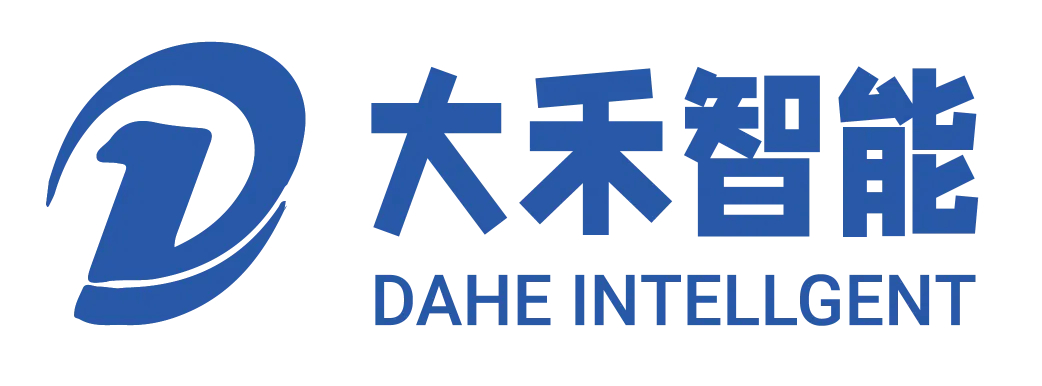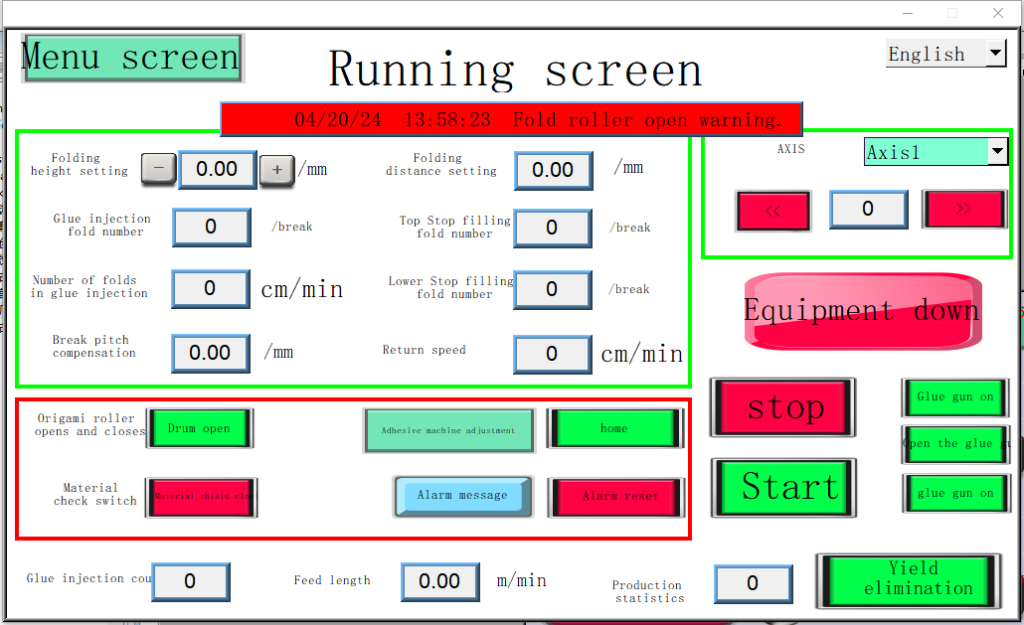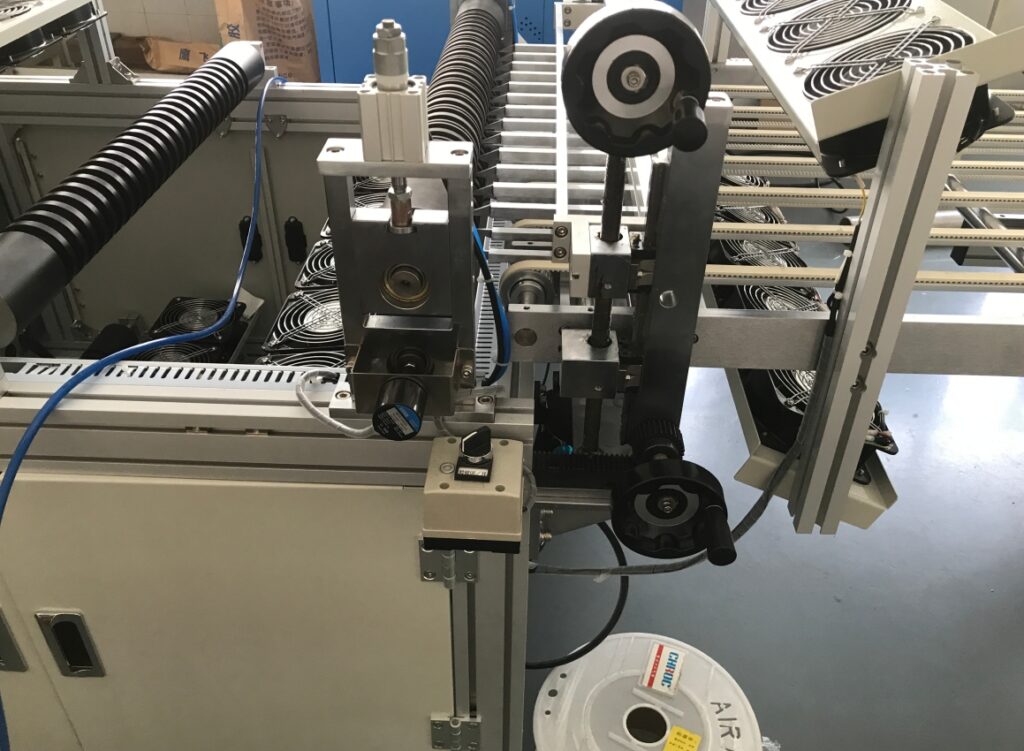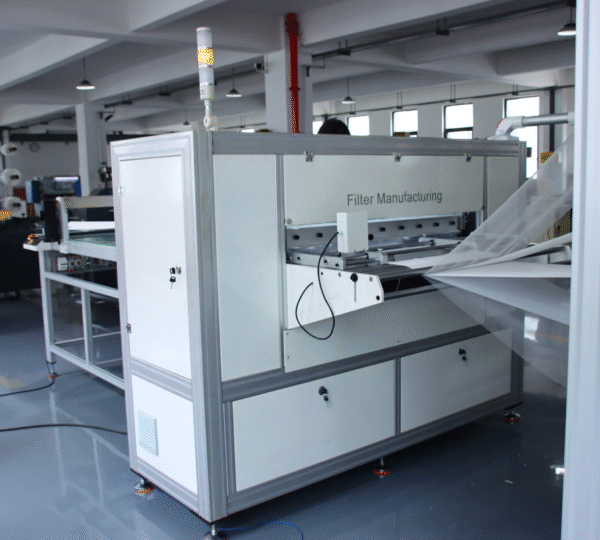How an intuitive HMI simplifies the operation of an automatic filter pleating machine, making it accessible even to new operators. Dahe Intelligent introduces HMI functionality to the automatic filter pleating machine, featuring several key and basic functions, including adjustable pleat height settings, glue injection folding numbers, paper feed speed control, fold distance compensation, and direct fold distance settings. Together, these features simplify machine setup, reduce errors, and empower operators of all skill levels.
Adjustable pleat height setting for the automatic filter pleating machine
One of the most basic HMI features implemented on an automatic filter pleating machine is the adjustable pleat height setting, which eliminates the need for manual gauge blocks and micrometer adjustments. First, the operator selects the desired pleat depth using an on-screen module with a graphical preview of the pleat height; the PLC then automatically calculates the required servo travel and performs the adjustment without stopping the machine. This designed interface displays both the nominal pleat height and the actual pleat height in millimeters, allowing technicians to confirm the setting at a glance. This digital adjustment can reduce physical setup time by 40% and decrease scrap rates due to incorrect pleat depth, which is particularly beneficial when switching between different media thicknesses on our adjustable-depth pleating machines.
Configurable glue injection fold count
On automatic filter folding machines, precise adhesive placement is crucial, so our HMI features a configurable glue injection fold count that enables complete control over glue application placement. In actual production, operators only need to enter a value to program the system to inject glue at every second, third, or fifth fold. Additionally, an animated preview on the touchscreen can show precisely which folds will be injected, eliminating guesswork. At the same time, I integrated this parameter into the machine’s motion profile so that the glue valve only activates at the specified number of folds. This feature reduces adhesive waste by up to 25% and prevents overapplication, enabling our automatic filter pleating machine with PLC control and servo drives to consistently maintain sealing quality every time it operates.
Control of the paper feed speed of the automatic filter pleating machine
To balance production and quality, I integrated paper feed speed control directly into the HMI of the automatic filter element folding machine, allowing operators to fine-tune the paper feed speed at any time. The operator needs to adjust the paper feed speed via a touch-sensitive adjustment dial, and the screen displays real-time encoder feedback. Additionally, the system displays tension indicators and issues warnings when the media stretches or pulls back. I configured the interface to record speed changes and correlate them with fold quality indicators, making optimization data-driven. This dynamic control enables technicians to fine-tune paper feed speeds for various media types or fold profiles, while also minimizing media tears and jams, and maintaining optimal cycle times for adjustable-depth pleating machines.
Fold Distance Compensation
Small changes in media thickness or mechanical wear can alter the pleat spacing. Our HMI provides fold distance compensation, a basic function of any automatic filter folding machine. If the pleat spacing deviates by ±0.5 mm during a production run, the operator only needs to enter the compensation value in the HMI. As a result, the system automatically adjusts the servo increment length to reposition the fold. Additionally, I set up automatic prompts to remind the operator to compensate when the deviation threshold is exceeded, thereby ensuring continuous production accuracy without requiring manual measurement. This feature maintains tight pleat tolerances and reduces downtime caused by mechanical recalibration for our adjustable‑depth media pleating line for HEPA filter panels.
Direct pleat distance setting
Complementing compensation, our HMI provides a direct pleat distance setting interface for initial setup and quick tool changes of automatic filter pleating machines. In addition to compensation, the operator can enter a master pleat distance (e.g., 8 mm or 12 mm) into the HMI; the machine then recalculates all subsequent pleat positions based on this parameter. At the same time, I included a graphical ruler and a real-time preview overlay on the touchscreen, allowing the operator to see the distance before running the first production cycle. This feature reduces changeover complexity and training time, allowing even inexperienced employees to achieve precise pleat distances and high-quality output from the first pass.
Simplified Operational Setup Improves Efficiency
Intuitive HMI design is key to simplifying the operation of any automatic filter element pleating machine, and I integrated features such as adjustable pleat height, configurable glue injection fold count, paper feed speed control, pleat distance compensation, and direct pleat distance setting into a unified touchscreen interface. These features simplify the changeover process, reduce operator errors, and maintain consistent fold quality across different media and production volumes.





